Da Nang, one of Vietnam's largest cities with a population nearing one million, offers a contrast to the bustling streets of Ho Chi Minh City and Hanoi. Despite its size, the city exudes a relaxed, beach town atmosphere that invites a slower pace of life. The Han River serves as a natural divider between the coastal area and the city center, lined with bars, parks, and scenic promenades.
.jpg) Golden Bridge at Ba Na Hills (Source: Collected)
Golden Bridge at Ba Na Hills (Source: Collected)
Da Nang boasts wide, well-maintained streets and expansive blue skies, making it one of the cleanest cities in Vietnam, with minimal air pollution and litter. The tropical climate remains warm during the rainy season and pleasantly mild, ranging from 19°C to 24°C (67°F to 76°F) even in the coldest winter month. Surrounded by mountains, national parks, and the ocean, Da Nang is truly immersed in nature.
These features contribute to Da Nang's reputation as Vietnam's “Most Livable City.” Here are a few reasons why.
1. Da Nang’s Well-Planned City Center
Located west of the Han River, Da Nang's city center serves as the bustling business district, featuring a vibrant mix of cafes, restaurants, markets, apartment complexes, and family homes—all within a ten-minute drive from the international airport. The area maintains a lively atmosphere without feeling overwhelming. Thanks to effective urban planning, even peak rush hour traffic remains manageable.
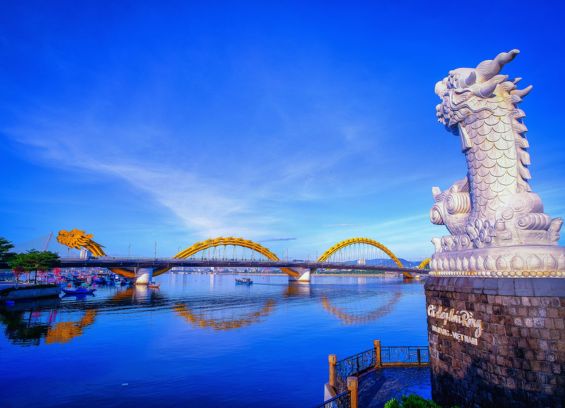 Dragon Bridge - the symbol of Da Nang city (Source: Collected)
Dragon Bridge - the symbol of Da Nang city (Source: Collected)
Da Nang is known more for its bars and craft beer scene than for nightclubs. The liveliest party spots line the river, but the city's nightlife truly stands out in its stylish cocktail bars and craft beer pubs. For live music, head to the beach, or venture to the east bank of the Han River for a combination of craft beer and fresh seafood.
2. Beaches in Da Nang: My Khe and Beyond
To reach My Khe Beach, simply cross one of the four bridges that connect the city center to the beach district. My Khe boasts pristine, expansive stretches of white sand that remain surprisingly uncrowded until late afternoon, despite its widespread acclaim. As sunset approaches, the beach attracts more visitors, but its miles-long coastline offers plenty of space to find a quieter spot. For those seeking solitude, heading north toward the national park reveals secluded beaches, some accessible only by hiking down from the mountains.
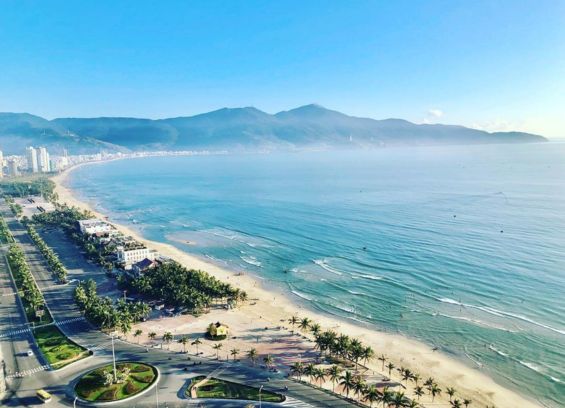 My Khe, Da Nang is one of the most stunning beach in Vietnam. Photo: Collected
My Khe, Da Nang is one of the most stunning beach in Vietnam. Photo: Collected
3. Monkeys and Mountains
In Da Nang, stunning mountain views are always within reach. The Son Tra Peninsula to the northeast, Marble Mountain to the south, and Ba Na Hills to the west create a breathtaking backdrop of rugged wilderness that accentuates the city’s boundaries. These natural landscapes not only enhance the city’s beauty but also offer opportunities for exploration and adventure.
 Monkeys are living on Son Tra peninsula. Photo: Collected
Monkeys are living on Son Tra peninsula. Photo: Collected
Son Tra Nature Reserve is home to over 200 animal species, including 29 that are rare and endangered. Notably, this peninsula shelters most of the world’s remaining red-shanked douc langurs. Visitors can ride a motorbike up the mountain to see the impressive “Lady Buddha” statue, whose radiant white figure is visible from the beach. The panoramic views from the peak are spectacular, showcasing distant skyscrapers amid lush jungle and shimmering ocean.
To the south, Marble Mountain rises as a cluster of limestone karsts rather than a single peak. While Son Tra is known for its wildlife, Marble Mountain features a rich spiritual heritage with ancient pagodas and temples. Hikers can ascend carved stone steps to discover intricate statues and carvings of deities, caves draped in prehistoric vines, and ornate pagoda rooftops that evoke a mythical atmosphere.
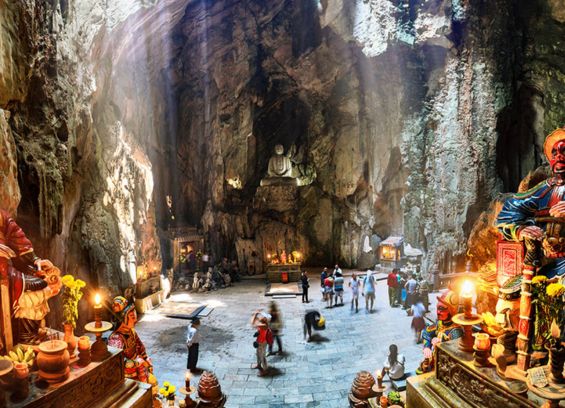 Marble Mountain is one of the most famous destination in Da Nang. Photo: Collected
Marble Mountain is one of the most famous destination in Da Nang. Photo: Collected
Perched atop Nui Chua Mountain in Ba Na Hills, Da Nang, the Golden Bridge, also known as the Giant Hand Bridge, ranks among the world’s top 10 most uniquely designed bridges. Although it’s called a bridge, it doesn’t span any lakes or rivers; instead, it elegantly curves across the mountain, connecting Marseille Station and Bordeaux Station within the Thien Thai Garden. At an elevation of 1,414 meters, the bridge resembles a rainbow in the sky, creating a breathtaking “stairway to heaven.” To access this remarkable structure, visitors must take a cable car ride, and once on the bridge, they are treated to panoramic views of clouds, mountains, and the distant city of Da Nang.
4. Quality of Life and Accessibility
In Da Nang, most attractions are just a 15-minute drive apart, making it easy to navigate the city. Whether traveling from the city center to the beach or exploring the peninsula's southern and northern edges, biking is a viable option, and Grab taxis are both quick and affordable.
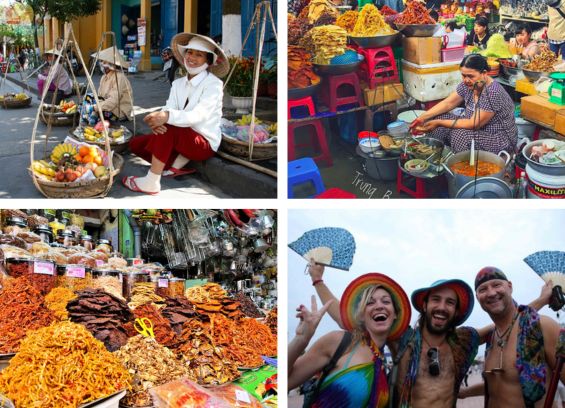
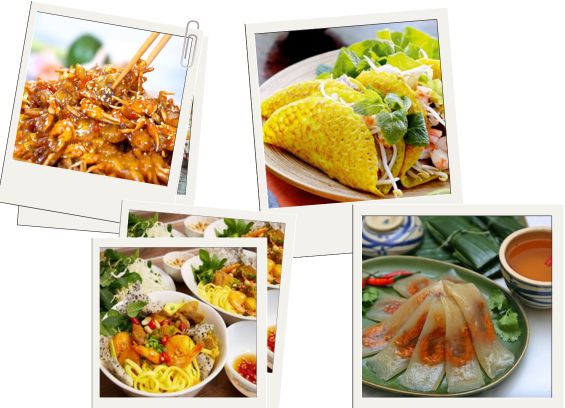 Daily life and some specialties of Da Nang. Photo: Collected and design
Daily life and some specialties of Da Nang. Photo: Collected and design
The city is abundant with affordable and healthy dining options. Street vendors offer authentic Central Vietnamese dishes at every turn, while Western cuisine is readily available in An Thuong, the beachside expat district. Seafood is exceptionally fresh, perfect for pairing with local specialties like mì quảng or bún chả cá. For beer enthusiasts, local brands such as Larue and Huda are popular choices.
Asia Top Travel offers a comprehensive range of services to help you fully explore Da Nang.
Contact Asia Top Travel to craft a holiday to explore this marvellous destination! Click here